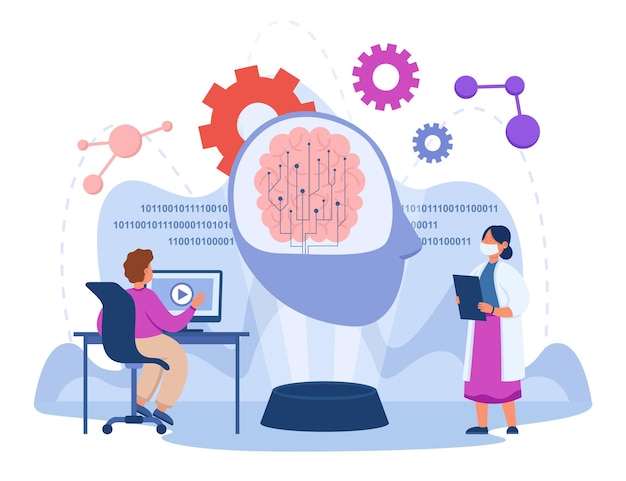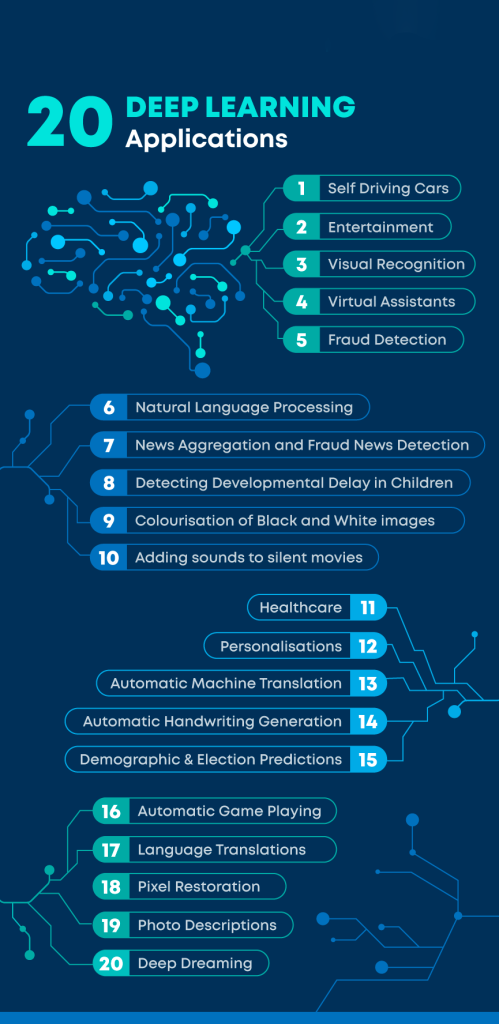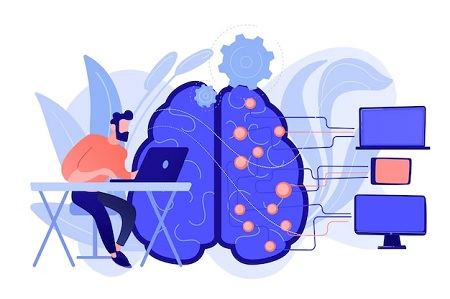
Introduction
In the ever-evolving realm of artificial intelligence, there exists a groundbreaking methodology that has revolutionized how machines perceive and interpret complex patterns: Deep Learning. This powerful technique has transcended previous boundaries, empowering machines to tackle tasks that were once considered beyond the realm of computational capabilities. In this article, we embark on an enlightening journey to demystify the concept of deep learning, shedding light on its core principles, practical applications, and the boundless potential it holds for the future.
The Essence of Deep Learning
Deep learning stands as a subset of machine learning, distinguished by its unique approach to training artificial neural networks for exceptional performance. These neural networks draw inspiration from the intricate design of the human brain, comprised of interconnected layers of artificial neurons. The hallmark of deep learning is its depth, manifested through multiple hidden layers nestled between the input and output layers. These hidden layers progressively extract intricate features and representations from input data using a series of intricate mathematical operations.
Architecting the Neural Network
- Input Layer: The entry point where raw data enters the neural network.
- Hidden Layers: These intermediary layers consist of neurons responsible for processing and transforming data using adjustable parameters known as weights and biases. The output of each neuron serves as input for subsequent neurons.
- Output Layer: The ultimate layer produces the network’s final output or prediction, be it classifying an image, translating text, or providing recommendations.
Training the Network
The enchantment of deep learning lies in the training process. During this phase, the neural network learns optimal weights and biases to minimize the disparity between its predictions and actual targets. This is accomplished through a technique called backpropagation, wherein errors are propagated backward through the layers to iteratively adjust parameters. The network refines its understanding of the data through successive iterations until it can produce accurate predictions.
Diverse Applications Across Industries

- Computer Vision: Deep learning has ushered transformative advancements in computer vision, enabling tasks like image classification, object detection, and facial recognition. It underpins the capabilities of self-driving cars to discern pedestrians, landmarks, and traffic signs.
- Natural Language Processing (NLP): In the realm of NLP, deep learning empowers machines to grasp and generate human language. It finds application in chatbots, language translation, sentiment analysis, and text summarization.
- Healthcare: Deep learning plays a pivotal role in medical image analysis, facilitating disease detection through X-rays, MRIs, and CT scans. It also contributes to genomics research and drug discovery.
- Finance: Financial institutions harness deep learning for tasks such as fraud detection, algorithmic trading, and credit risk assessment.
- Entertainment and Marketing: Deep learning drives recommender systems on streaming platforms and fuels personalized advertising campaigns.
Challenges and the Road Ahead

Despite its successes, deep learning does face challenges, including the need for extensive labeled data and significant computational resources. As the field evolves, researchers are actively exploring avenues to enhance the efficiency and adaptability of deep learning techniques.
The Future Promise
The trajectory of deep learning promises unparalleled potential. From advancing medical diagnostics to bolstering autonomous systems, its applications are poised to continue shaping various industries. The emergence of hybrid models, which fuse deep learning with other AI techniques, hints at even more sophisticated possibilities.
Conclusion
Deep learning stands as a transformative force within the AI landscape, equipping machines with the ability to unveil intricate patterns and make informed decisions. The neural network architecture, coupled with the training process, has propelled advancements in diverse sectors, from computer vision to healthcare and beyond. As we delve deeper into the possibilities of deep learning, it’s evident that its ongoing evolution will reshape our world, steering us towards unprecedented horizons in the realm of artificial intelligence.
Thanks,






Leave a Reply
You must be logged in to post a comment.